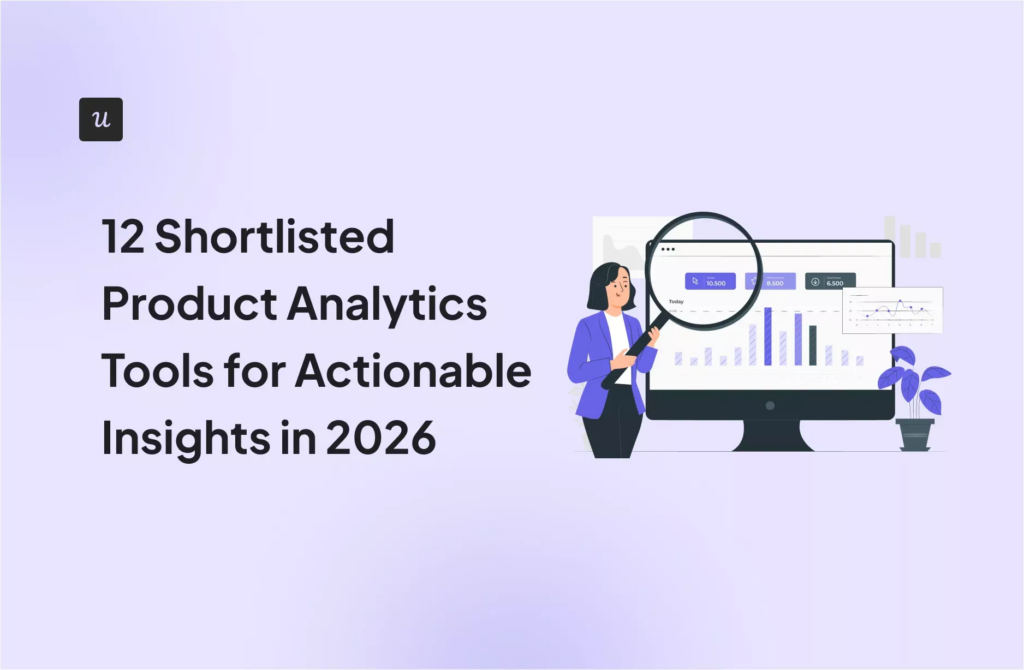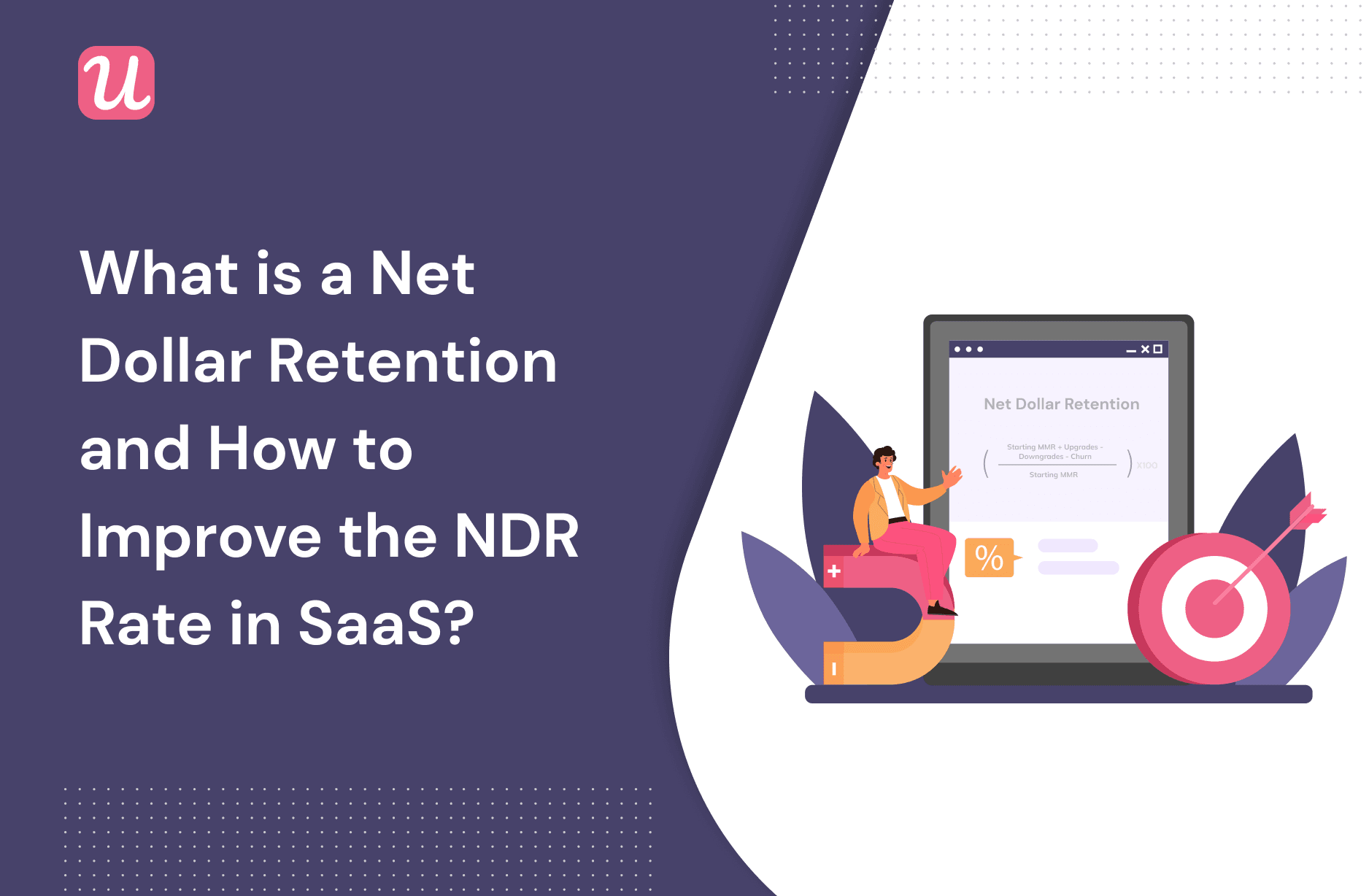
What is Net Dollar Retention And How To Improve Your NDR Rate in SaaS?
Try Userpilot Now
See Why 1,000+ Teams Choose Userpilot

What is Net Dollar Retention in SaaS?
Net Dollar Retention is a metric that gives the percentage of revenue retained from your existing customer base over a particular period.
NDR is usually calculated monthly or annually and includes cross-sells, upgrades, cancellations, and downgrades.
Suppose that your SaaS company has 120 customers. 40 of these customers churn in a given year. That said, to measure your NDR, you have to consider the additional income earned from the remaining 80 customers.
Net Dollar Retention is also known as Net Negative Churn since the opposite of revenue retention is revenue churn.
Why is Net Dollar Retention important for SaaS companies?
A poor Net Dollar Retention suggests your customers are at risk of downgrading or outright canceling their subscriptions.
So, NDR helps you know whether your product or service is capable of meeting the needs of customers and engaging them. If you can’t engage your customers, they will eventually leave.
NDR also allows businesses to keep up a good financial performance and increase their customer lifetime value.
Moreover, it’s very useful in determining the quality of your customer success and, therefore, is a key indicator of a stable and healthy business.
Besides shedding light on customer retention, NDR provides insights into the growth and account expansion aspects of SaaS businesses.
How to measure Net Dollar Retention (NDR)
Net Dollar Retention rate is the percentage of the starting Monthly Recurring Revenue (MRR) you are left with at the end of a specific period.
To calculate the SaaS NDR, add your upgrade MRR to the starting MRR. Then subtract your downgrades MRR and churn MRR from the result. Divide the resulting value by the starting MRR and multiply the ratio by 100%.
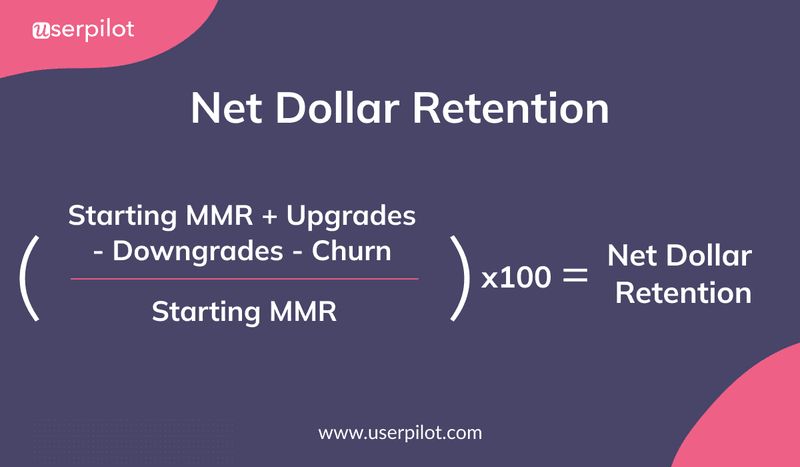
Let’s look at each of the metrics that go into this calculation:
- Monthly Recurring Revenue: It’s the estimated amount of recurring revenue your company can earn each month.
- Upgrade MRR: It’s the additional revenue generated from subscribing to upgrades through cross-sells, upsells, and add-ons from existing customers each month. It’s also called the expansion MRR.
- Churn MRR: It calculates the amount of recurring revenue that you lose due to cancellations within a month.
- Downgrade MRR: It’s the opposite of expansion MRR that measures the fall in revenue due to downgrades by existing customers every month.
For example, your starting MRR is $6,000, and your downgrade, churn and upgrade MRR are $400, $500, and $3,000, respectively.
Therefore, your NDR is:
[($6000+$3,000-$400-$500)/$6,000]*100% = 135%.
Now, is this a good NDR rate?
What is a good Net Dollar Retention rate?
In fact, any NDR rate over 120% is great but 135% is considered excellent.
Businesses may track NDR to help them reach hypergrowth, gain success in private equity partnerships, and/or release initial public offerings (IPOs).
A Crunchbase survey revealed that the NDR of organizations that have successfully launched IPOs is right below 107%, on average. So, if your NDR is above 120%, you’ve done a great job.
Nonetheless, a healthy SaaS company should maintain an NDR of over 100% since it means that upgrades are outweighing downgrades and churn.
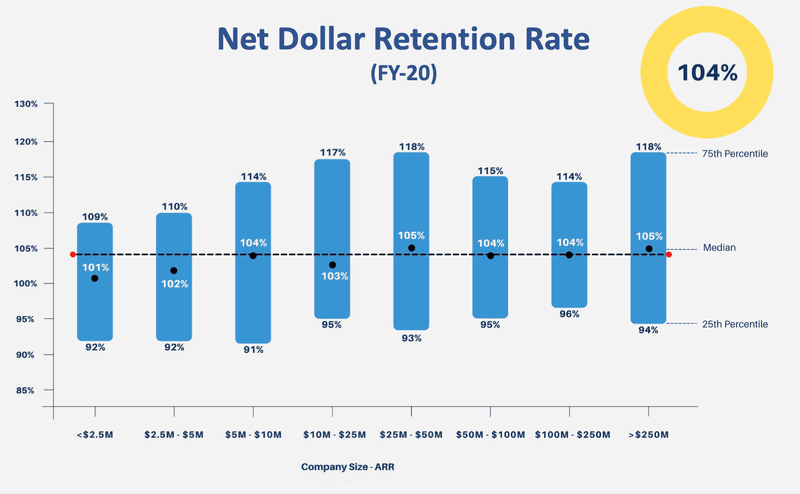
What’s the difference between Gross and Net Dollar Retention?
Dollar retention is the most essential metric to track for SaaS companies.
You can measure dollar retention in 2 ways: Gross Dollar Retention (also called gross revenue retention) and Net Dollar Retention.
Gross Dollar Retention tells you how much of your existing customer base you’ve retained year over year without accounting for upgrades.
Simply put, it’s equal to the Annual Recurring Revenue (ARR) minus the downgrade and churn MRR, all divided by the starting ARR.
On the other hand, NDR includes the recurring revenue from upgrades. You can either use MRR or ARR to calculate it, based on whether you measure NDR monthly or yearly.
Best tips to improve your Net Dollar Retention rate in 2022
As previously mentioned, your NDR should be at least above 100%. And to achieve that, your recurring revenue from upgrades should outpace the revenue loss from downgrades and churn.
Therefore, to improve your SaaS NDR, you need to focus your resources on increasing account expansion through upsells and cross-sells and reducing churn.
Here are 4 tactics for you.
- Prompt users to upgrade.
- Use contextual in-app messages.
- Use NPS surveys.
- Provide an in-app help center.
Improve NDR rate by increasing account expansion
Account expansion will not only let you make the most out of existing customers but also improve customer satisfaction. It is a less expensive and easier way to increase revenue than acquiring new customers.
To increase expansion MRR:
- Prompt users to upgrade by showing what they are missing out on.
- Use contextual in-app messages to drive account expansion.
Prompt users to upgrade by showing what they are missing out
Fear of missing out (FOMO) is a great persuasive method to get customers to upgrade. Sometimes all they need to know is what they will lose if they don’t spend more on your product.
Modals are a very effective automated upgrade method in highlighting the added value of an upgrade. Thus, they encourage freemium or basic plan users to upgrade to paid or premium plans.
An upsell modal is prompted when customers want to complete a task that’s restricted by their current account.
Moreover, you can leverage product usage analytics to identify the most used features. You can then use a modal to tell customers they’re about to lose access to the feature because of feature usage account limitations. Or, they can at least sign up for a free trial of a premium plan.
Here’s an example of SmallPDF that encourages freemium users to convert to paying customers by reminding them of certain account limitations that are making them miss what they need.
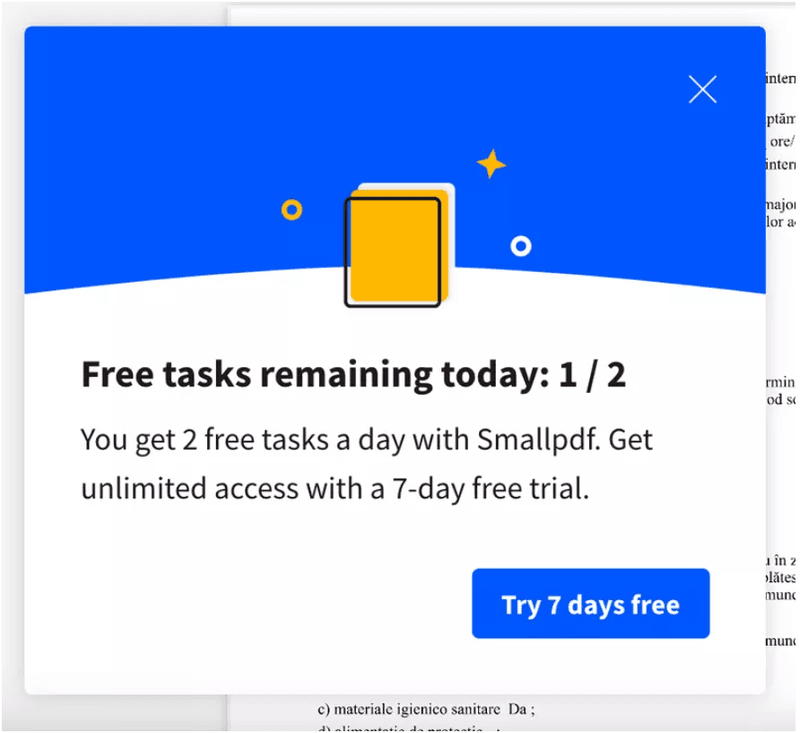
To maximize the number of signups for premium trials, SmallPDF uses a concise microcopy, captivating graphics, and a big CTA button. Their modal clearly tells customers that their access to a task will be cut off after one more run unless they upgrade.
You must use modals in moderation because they’re the most intrusive type of in-app messaging. You should keep your upsell modals for loyal customers far ahead in their user journey to reduce churn.
Use contextual in-app messages to drive account expansion
Contextual in-app messaging is another way you can boost your expansion MRR to ultimately improve your Net Dollar Retention rate.
These messages use triggers to send contextual alerts and remind customers to upgrade.
For instance, when Slack users scroll up to look for old messages, a banner pops up to say they’ve reached the end of the first 10,000 messages. So, if a user needs to view older messages, they would have to upgrade to a paid plan.

Banners are especially valuable when your business model has multiple price points depending on resource usage.
Userpilot’s advanced segmentation capabilities make sure that you know when to send the right message to the right customer at the right time.
You can segment users based on their in-app behavior, demographics, account, user sentiment, and user attributes.
The larger your business, the more segments you’ll usually need. So, you might need to use a combination of these criteria. Small businesses typically don’t need more than 3-4 segments.
The behavioral insights allow you to offer personalized solutions to each user segment. Moreover, you can discover the segments at risk of churn and take action to prevent it.
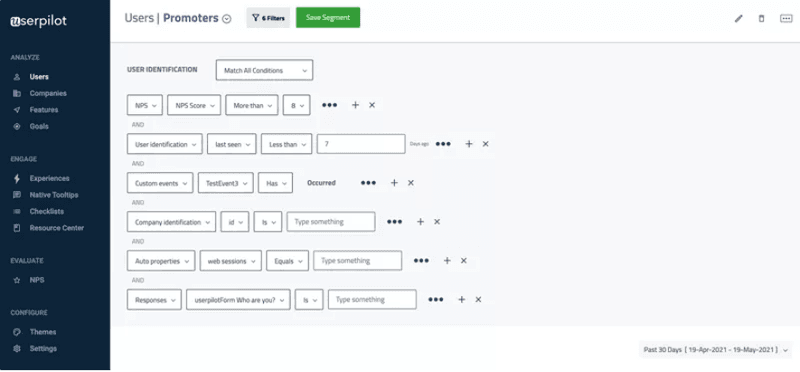
Improve NDR rate by reducing churn
Another way you can improve your SaaS NDR is by reducing churn. If you can reduce the revenue loss from cancellations, your Net Dollar Retention rate will rise.
- Use NPS surveys to identify dissatisfied users before they churn.
- Provide an in-app help center to reduce churn.
Use NPS surveys to identify dissatisfied users before they churn
An in-app NPS survey is great for understanding user sentiment and loyalty. It asks customers how likely they are to recommend your product to others. So, your dissatisfied customers (detractors) are the ones who rate you 6 or below.
On the contrary, promoters rate you 9 or 10 and are your most trusted customers and brand advocates.
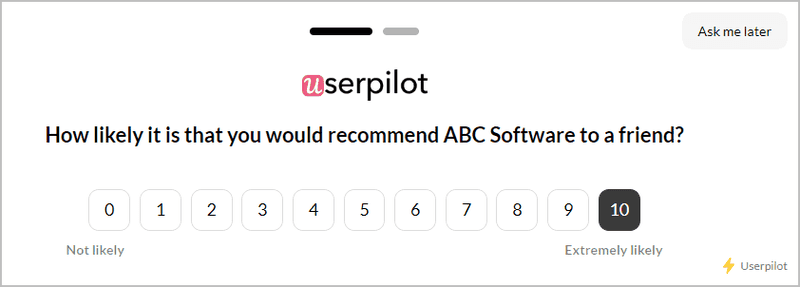
Furthermore, you should add a qualitative follow-up question to know the reason by their scores. This way, you can learn your weaknesses and make changes to your product and user experience accordingly to prevent churn.
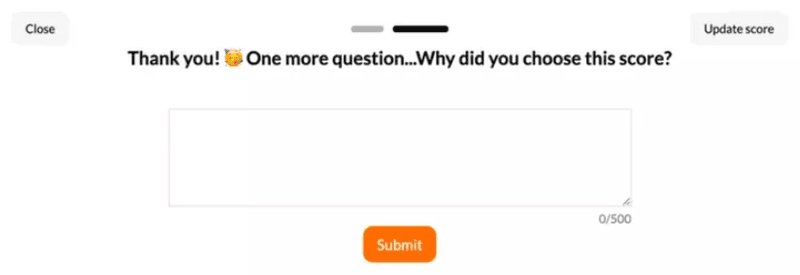
With Userpilot, you can trigger in-app NPS surveys, analyze the results, and automate responses based on them.
You can find emerging patterns of what makes customers unhappy. Then you can proactively get in touch with low NPS users to try to address their issues and convert detractors to promoters.
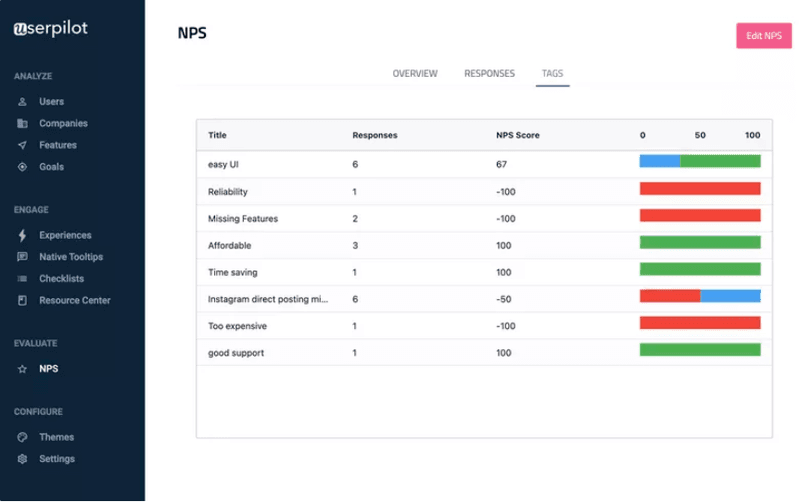
And now, with Userpilot’s new mobile features, you can also onboard and engage mobile app users by creating NPS surveys.
Provide an in-app help center to reduce churn
In-app self-service support helps you achieve customer success and hence, reduce churn. However, resource centers are more than just self-service support. A resource or help center provides in-app guidance on request.
A good help center typically consists of:
- Best practices
- FAQs
- Knowledge base
- Troubleshooting
- Bug fixes
- Video guides
- How-tos, and more.
Help centers allow customers to solve repetitive issues on their own so they won’t always have to rely on human agents. Thus, it takes some pressure off the support team so they can focus on more pressing matters.
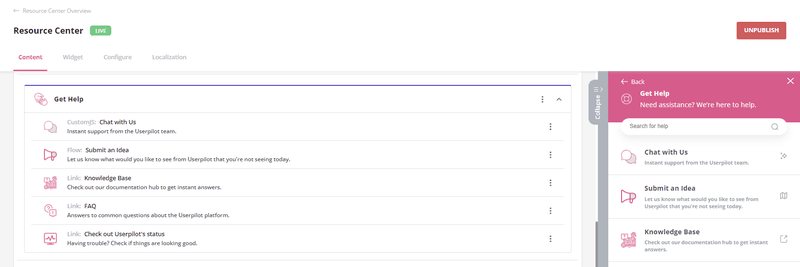
Summing it up
Your NDR is key to unlocking growth and success.
You can improve your SaaS NDR by driving more account expansion and by reducing churn. Both will help maintain an NDR of over at least 100%, if not 120%.
Want to boost your Net Dollar Retention? Book a Userpilot demo and see how you can grow your revenue.




